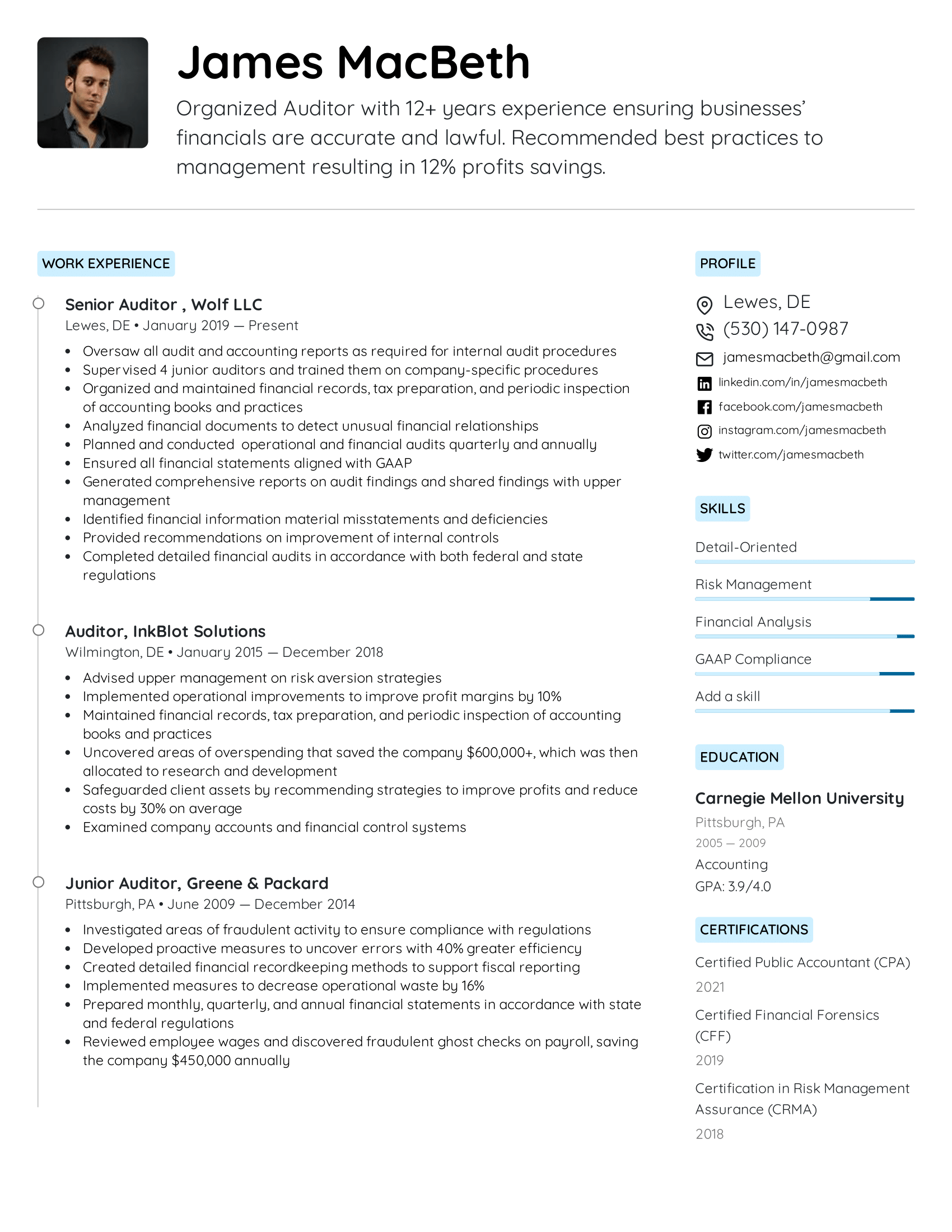
In this guide, we will cover everything you need to know about including references on a resume, from how to format them to how to know when they should be included at all.




The answer to whether or not to put references on your resume can vary.
The general rule of thumb when is actually to not include references on your resume.
This is because employers are unlikely to reach to references until the interview phase, making the inclusion of them on an initial resume typically unnecessary.
This does not mean that there are never scenarios in which you will need to know how to properly list references.
For specific jobs and in certain situations, you may be asked or required to include a list of references within or alongside your resume.
When you need strong references, it's important to structure them so that they stand out and impress the hiring manager, landing you the pivotal interview.
In this guide, we will be covering the basics of how listing references on your resumes and when to know it’s time to use references.
Plus, we will discuss alternatives to sending references that can help you in situations where sending a reference may be a difficult task.
When it comes to listing references on a resume, there are two main ways you can go about it:
Making a dedicated reference section involves making the space on your existing resume to include a short section with information on your references.
More often than not, job applicants who have chosen to include references on their resume will do so on an entirely separate page to be included with the resume.
The second option of listing your references on a separate page is actually the preferred and recommended method.
This is because references are not generally expected to be included on an initial resume and can take up unnecessary space that may be off-putting to hiring managers.
Comparatively, a separate page of references gives the hiring manager the opportunity to look more closely at the information in the resume without becoming visually disoriented by too many sections.
Hint: Not sure how to list other sections of your resume? Check out our Resume Guides to learn more about how to craft each section of your resume.
So, if it is typically not expected to have references included on an initial resume, when is the best time to include references on a resume?
Creating a reference section or page can be necessary depending on a number of situations, including:
Quick Tip: If you have impressive references, such as a company CEO or another recognizable figure, be sure to make these the most noticeable references and the first ones you list in your reference section.
Overall, the golden rule is to wait to provide references until they are requested.
Let’s take a look at a few examples of references on resumes to learn more about common mistakes made when crafting a reference and how to correct them.
It is highly important to include the necessary information to contact a reference – just a name and company is not enough. You should always include at least an official business number and an official business email in your references.
Incorrect:
John Doe
CEO of Doe Corporation
123 Avenue Way, New York, NY
Correct:
John Doe
CEO of Doe Corporation
123 Avenue Way
(123) 456-9890
johndoe@email.com
Always be specific when including the reference’s job position or title.
Don’t just list the name of the company without the exact job title to go along with it.
If you are unsure of a reference’s job title, ask them before submitting your references to an employer.
Incorrect:
Jane Smith
Works for corporate at Best Buy
42 Wallaby Way
(123) 456-7890
Jane.smith@bestbuy.com
Correct:
Jane Smith
Head of Marketing and Sales
Best Buy
42 Wallaby Way
(123) 456-7890
Jane.smith@bestbuy.com

Formatting a reference section will ultimately depend on if it is being created within a larger resume or separately on a different page.
For on-resume reference sections, it is important to keep them as short as possible, potentially even excluding some of the basic information.
If you are including references directly on a resume, you will likely only want to include one or two of your most relevant and impressive ones in order to not take up too much space.
When making a separate page for references, you can simply stack them as you would jobs in a work experience section, placing emphasis on relevance in how the references are ordered.
The Basic Reference Format:
It is important when writing out your references that you do not include personal information about the reference, such as a personal cellphone number or email, without their explicit permission.
It is best to just air on the side of caution and only include official and public contact information.
There is, of course, optional additional information you may want or choose to include within a reference.
This can include:
As for formatting the rest of your resume, don’t forget to check out our other guides in this series including How to Write the Perfect Resume and How to Choose the Correct Resume Format!
We have already covered the basics of what to include and how to format a basic reference – but what kind of information should be excluded from a reference on a resume.
Here is a quick breakdown of what kinds of information should be excluded from a reference:
You ultimately want to provide concise references that are easy to ready quickly and clearly show why that person has been included as a reference.
Take a look at these two examples on correcting reference errors:
When including additional information, keep it to one line or less of the most relevant information.
Additionally, keep additional specific and don’t use vague wording such as “several years.”
Incorrect:
Jack Frost
CEO of Frost Inc.
21 East Avenue
(123) 456-7890
jack@frost.com
I worked closely with Jack for a number of years and learned a lot from him that contributed to my skills today.
Correct:
Jack Frost
CEO of Frost Inc.
21 East Avenue
(123) 456-7890
jack@frost.com
I worked as Mr. Frost’s personal and administrative assistant for 8 years.
When making your list of references you plan of including, it is important to not include too many from the same company.
You should only really include two references from the same company if each reference witnessed different skills or accomplishments of yours that the other did not.
Incorrect:
You worked at a corporate company in the communications department as a copywriter, and you have worked with both junior and senior level copywriters who you have included as references.
Correct:
You include only the senior copywriter as a reference, as they can better attest to your skills and their position is more impressive and relevant to the job you are seeking.
Assuming you are using a separate, dedicated references page, the ideal number of references to aim for is between 3 to 4.
In some cases, you may include up to 5 to 6 references, though generally you should limit yourself to a lower number unless specifically requested to do otherwise.
When selecting your 3 to 4 references, it is important to keep a few factors in mind:

As you are creating your list of potential references to contact, there are a number of different types of people you can consider including.
It is important to keep in consideration how a reference can relate back to the job you are applying for, and whether their testimony of your work ethic and skills will be relevant enough for the desired position.
Here are some common examples of who to include as references:
Asking for professional references can be a bit nerve-wrecking, especially if your references are busy people.
The key to asking for references is to be polite and concise in your request. A direct phone call is preferred for asking for references, but a quick email can work in a pinch as well.
When asking someone to serve as a reference for you, it is important to be considerate of their potentially busy schedule and give them a good time frame for when to expect a call or email.
This is another reason why it is important to wait to provide references until requested, as it will give you a narrower window of time to give to your references of when they will need to be on the lookout a hiring manager to contact them.
Quick Tip: When you call or email to ask for a reference, this is a great time to confirm that the information you have is correct (such as their specific title and business phone number).
It is generally advised against to include references that have a strong personal relationship with you outside of work (such as a significant other, parent, or sibling) as this can result in a biased recommendation from the reference.
However, exceptions can be made in certain instances, such as if you worked within a family-owned business or if the reference worked directly with you for a long period of time.
In general, however, try to avoid including references that are too personally related to you.
If you are a new graduate or are returning to the workforce after some time away, you may not have many recent professional references to include in a resume.
For recent grads, including one or two professors can be acceptable, but you will likely still need other references.
Here are some examples of alternative references when you lack strong professional ones:

Ultimately, the key to doing references right is to wait to provide them until they are requested by a hiring manager or potential employers.
Once references have been requested, remember the following five takeaways that are key for rocking your reference section:
To learn more about all the elements of creating a great resume, check out our beautiful resume template designs and resume examples for inspiration!
Showcasing your achievements is what can be the cherry on the cake to help you stand out from the crowd as a top performer and really attract employers.
Your work experience is a summary of all your hard work, dedication and achievements over the years. Here's how to do justice to your work history.
Follow our step-by-step guide and resume examples to learn how to correctly include certifications on your resume. Make your candidacy stand out and land the interview.
Don't worry, we've all been there. Thrown into the job world with little to none work experience and no idea how to start a resume. We're here to help.
Learn essential strategies to land your first, second, or even fifth internship as a college student.
Being a marketer requires you to have many skills and proficiencies. In this guide, we will provide you with 20 of the best marketing skills to include on a resume. Plus, we will cover formatting and how to improve your marketing skills!
Including technical skills on a resume is an absolute necessity. These types of skills show employers your quantifiable qualifications. In this guide, we will cover exactly what a technical skill is and some of the best examples to include on a resume.
How well you communicate and interact with people is a top priority to employers. In this guide, we will enlighten you on the importance of interpersonal skills. Plus, we will provide you with our top 15 examples to consider including on your resume!
